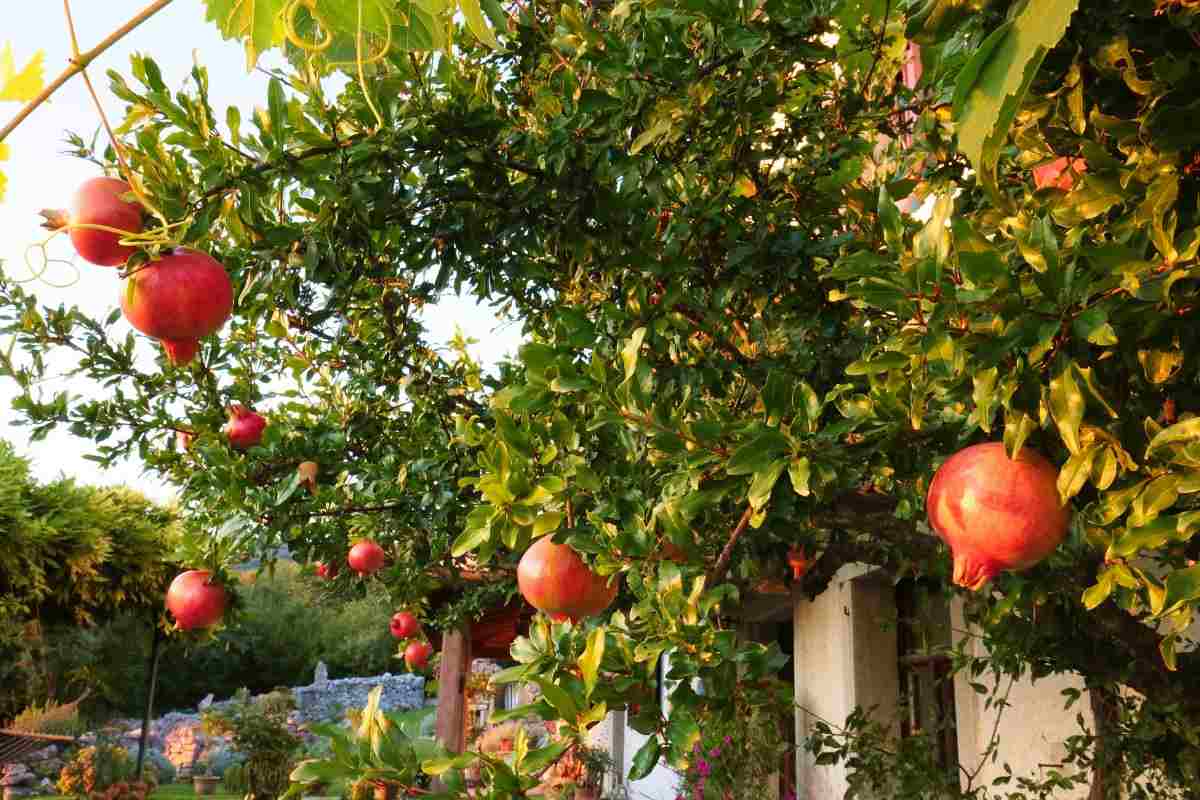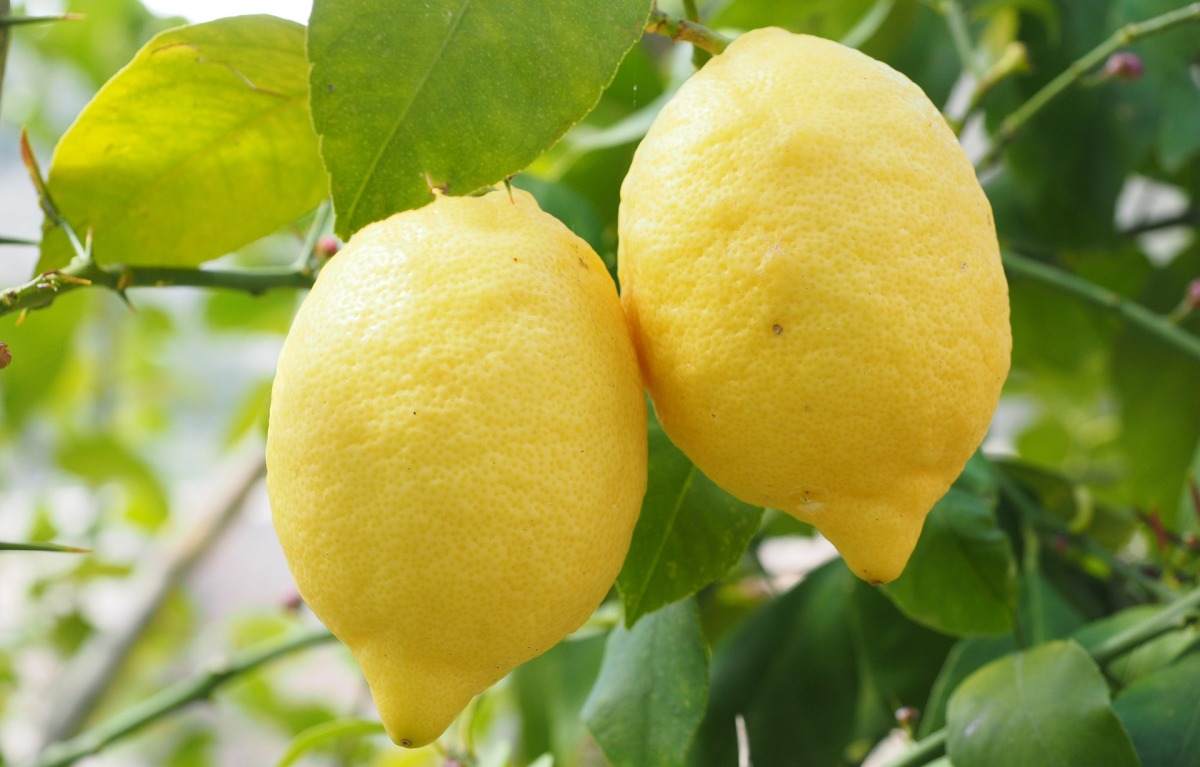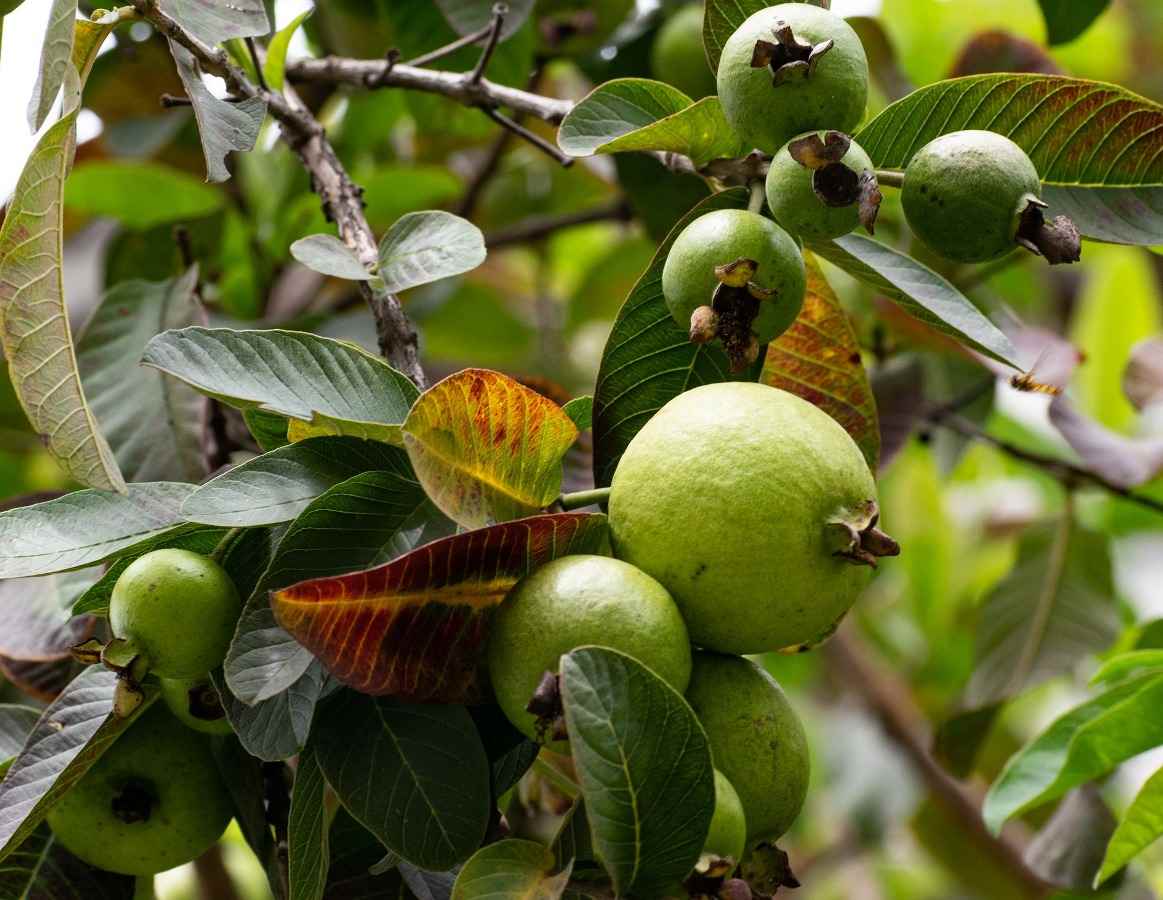Introduction to growing fruits in the backyard
Fruit plants can fit into any size garden as long as you have a sunny spot. You don’t want a lot of space and you can even grow fruit crops in containers. You don’t have to own a large estate to grow a different variety of fruits at home. If you don’t have space for full-sized trees, you can plant dwarf forms of apples, pears, and other types of fruits. In this article we also discuss below topics;
- What is the easiest fruit to grow
- How do I grow fruit trees in my backyard
- How much space does fruit trees need
- Easy fruits to grow in pots
- How do you plant fruit trees in a small space
- How can increase my fruit size
- Is Epsom salt good for fruit trees
A step by step guide to growing fruits in the backyard
Fruit trees make a lovely addition to any garden, but there are a number of things one must keep in mind prior to making a purchase. It requires less space than most people think to grow fruits in your backyard. Most fruit-bearing plants and trees are decorative and look good as part of a landscape. Growing fruits in containers is a wonderful way to save money on grocery bills. Also, there’s nothing more satisfying and delicious than biting into a juicy piece of fruit that came out of your own garden.
Gardening tips for growing fruits in the backyard

- Grow fruit that you and your family love to eat.
- Choose an open, sunny spot for growing fruits. Then, check your soil type and use containers or raised beds if needed.
- Always prepare the soil well and remove weeds and stones and dig it over to improve the structure.
- Improve the soil by digging in compost or leaf mold and make your own compost.
- Most fruits need consistent moisture to produce well. The exact amount to give them depends on soil type, weather conditions, and what types of fruits you’re growing.
- Plant fast-growing fruit plant varieties in containers for a speedy harvest.
- Stagger your sowing by sowing a few seeds every 2 weeks rather than all at once for a long harvest.
- Keep everything well-watered, particularly during dry spells. Then, keep the fruit trees well-watered. One downside to growing fruit in pots is the necessity for frequent irrigation and soil in containers dries out much more quickly than ground soil.
- Check the containers every morning and evening time. Water the fruit plant or bush when the top inch or two of soil becomes dry and apply the water until it drains from the bottom of the container.
- Watering plants with spoiled milk is a good method to both stave off powdery mildew and add some nutrients to the soil at the same time.
Preparing the soil for growing fruits in the backyard
Good plants need good soil. Most vegetables like soil that is rich, moist, and well-drained, with neutral acidity. There are some exceptions, including blueberries which need acidic soil. These are best grown in containers filled with acidic compost. But for the majority of plants, you simply need balanced, good quality soil.
Soil improvers are;
Digging in plenty of organic matter will improve the structure of soil and add nutrients for the plants. Most gardeners simply add compost or leaf mold. These are common soil improvers obtainable from garden centers and though you should start making your own compost if you don’t already. It’s so easy and keeps a constant supply of extra nutrients to boost your fruit plants.
You can dig some compost or leaf mold into the top few inches of the soil a couple of weeks before planting most fruit trees. You can apply the organic matter over the surface of the soil around established plants as mulch. Then, this allows the nutrients to feed down into the soil, as well as helping to retain moisture and stop weeds growing.
Sun light requirement for growing fruits in the backyard
Fruit trees require a location in the yard where they receive at least 6 hours of sunlight daily during active growth. Sunlight is needed for the fruit to produce good color and good flavor. During the first and second growing seasons, young trees can require sunburn protection for their trunks.
Here are some guidelines for planting your own fruits;
Apples and Pears – 8 hours of sun a day. Especially appreciative of morning sun to dry the plant leaves and reduces the chance for diseases.
Figs – 8 hours of sun and a large space to grow.
Citrus – Oranges, lemons, limes, kumquats, grapefruits, and tangerines all need a full day of sun means 6 hours at least. They don’t like frost and require a year-round warm climate. Some dwarf varieties do well as indoor potted fruit plants given well-drained soil and plenty of winter light from a window.
Cherry – need 8 hours of sun a day.
Banana – these tropical plants need at least 6 hours of sun a day to give their best fruit.
Peach and Nectarine – 6 hours of sun and good air circulation around the plant leaves will give you a bumper crop. In really hot climates, a little afternoon shade will keep the plant leaves from burning.
Space and pollination for fruit trees
Space and pollination are very important for fruit trees. Some fruit trees, such as a fully grown apple, can grow up to about 40 feet wide with a 30- to 40-foot spread, so you need to make sure you have space for large fruit trees or grow semi-dwarf plant varieties that reach only one-half to three-fourths the size of regular trees. You have the choice to grow dwarf fruit tree varieties that grow about 5 to 10 feet tall.
Many types of fruit trees need cross-pollination to set fruit. Fruit trees requiring cross-pollination include apples, plums, and pears. Other fruit trees, such as apricot, peach, and nectarine, are self-fruitful, which means pollen from the same cultivar in the area can pollinate the tree. With self-fruitful varieties, however, the fruit is enhanced if more than one fruit tree is planted in the area.
Containers for growing fruits in the backayard
Grow other types of fruit in large and deep containers. Dwarf fruit trees, blueberry bushes, and raspberry bushes need large, deep containers that sit on the ground. Nearly any kind of container can be used, as long as it has several drain holes in the bottom.
Best fruits to grow in pots and containers are Blueberries, Cherries, Figs, Gooseberries, Peaches and nectarines, Plums, Raspberries, and Strawberries. Growing fruit trees in containers are very easy, and there are some decided advantages. A small fruit tree in a container can be moved around to take advantage of different sun and shade patterns on a patio, deck, or backyard.
Choose a quality pot if the fruit tree is going to be in it for any length of time. Avoid cheap plastic pots and drainage holes are necessary. In general, it is best to start fruit trees in pots that are at least 10 to 16 inches. Glazed ceramic pots or good quality polyurethane are good choices for growing fruit trees.
How to plant fruit trees in the backyard
- Dwarf rootstocks limit the size of fruit trees and making it easier to grow them in a small garden. If you’ve ordered bare root nursery stock, soak the roots in water or manure tea up to 24 hours before planting. If you can’t plant within a few days after receiving the shipment, repack the plant in the damp sawdust and wood shavings it came in and store it in a cold, dark location until the ground can be worked. Never expose the bare plant roots to wind or sun.
- Mulch around the fruit tree with organic matter (leaves, compost, and grass clippings, etc.). Don’t use fresh manure, though well-rotted manure is fine and line the mulch in the same dish shape around the tree.
- Potassium is the key driver of fruit size and alongside nitrogen is required in large quantities throughout fruit growth. Though, too much nitrogen at a late growth stage can restrict fruit size; so a balanced nutrient application is crucial.
- Water the fruit tree until the soil cannot readily absorb any more. Drive 1 or 2 stakes into the ground outside the root zone to mark the tree. Fruit trees grafted to dwarf rootstocks develop smaller root systems than standard-size trees and need some support. After planting dwarf fruit trees, attach the tree to the stake using some -flexible tubing or other material.
- As fruit plants need nutrients, such as magnesium and sulfur, to stay healthy, Epsom salt makes the primary nutrients in most plant foods (nitrogen, phosphorus, potassium) more effective. You get healthier fruit trees with Epsom salt as fertilizer.
Insect and disease control in fruit trees
If you follow good cultural practices and select disease-free trees, you should be able to keep the most common orchard pests and diseases in check without the use of chemicals. But to grow fruit organically, you will want to tolerate some degree of pest and disease damage. If you were to prevent all insect and disease damage, you would need an arsenal of toxic sprays and something no one wants to use around the home landscape.
Many chemical or mineral sprays and treatments are available for fruit trees but they are toxic to beneficial insects. Products containing carbaryl and malathion are common fruit tree insecticides that target a large range of tree insects. Sprays with sulfur, potassium bicarbonate, and fixed copper are effective against fruit tree diseases. Controlling diseases of fruit trees take multiple approaches, including preventative fungicidal or bacterial sprays. Dormant sprays can help control insects and diseases by killing overwintering pest eggs and growth stages. Neem Oil can be used as a dormant spray as well as to control insects and diseases during the growing season.
The best fruits to grow in the backyard
Start in a small to medium-sized pot like 3 to 5 gallons and then repot the plant gradually into one or two sized bigger pots than the root ball of the plant. A 20 to 25-gallon size pot is an ideal one for a fruit tree in the container.
Lemon – Lemon trees have adapted themselves for container gardening. Almost all the plant varieties are suitable, but there are some that grow best in specific conditions. You still need to protect lemon plants from freezes and provide plentiful sunlight. Though lemon trees will grow in just about any well-drained soil, and they prefer a slightly acidic mix.
In case if you miss this: Growing Organic Lettuce.

Strawberries – Strawberries are without a doubt one of the best fruits to grow in the backyard. The best about growing strawberries in containers is they are very easy to grow, don’t require large pots or space and you can grow on your small urban balcony. You can try to grow strawberries in tropics in winters.
Apple – Given plenty of suns, apple trees produce in almost any well-drained soil and take summer drought without batting an eye. When growing an apple tree in such a small space, it would be better if you select a self-fertile variety so that you don’t need to grow more than one plant.
Pomegranate – This is one of the best-growing fruits in the backyard. Pomegranate is one of the juiciest and healthiest fruits and perhaps the easiest to grow in pots because it has a shallow root system when compared to large fruit trees.
Fig – As figs are most suitable for warm temperate regions, it is best to grow a fig tree in a pot if you live in a climate where winters are harsh, and you don’t have enough space. Select an appropriate variety to grow in a pot and provide plenty of sun to your plant. Regular pruning and fertilization are necessary for growing fig.
Cherry – Bush cherry varieties are suitable for container gardening. The tree favors a soil that is well-drained and composed of plenty of organic matter.
Guava – Guava tree loves the sunny and warm exposure. Guava is a tropical plant but very much adaptable to temperate climates with moderate winter.
You may also check this: Dragon Fruit Growing, Profit, Cost, and Yield.

Watermelon – Watermelons are easy to grow in pots, all they require is good support and well-drained potting soil.
Banana – The is common and is one of the best-growing fruits in the backyard of any home in India. Banana trees require full sun, heat, humidity, lots of water, and well-draining soil. Growing banana in a pot is very easy, and its lush green appearance can give any place a tropical look and feel.
Pineapple – Pineapple plants are small and compact and never grow more than 3 to 6 feet tall. And, the plant has shallow roots when compared to other fruit-bearing plants or trees that are why it is possible to grow them in pots.
Raspberries – Raspberries are a bit tricky and unruly to grow in containers, but still, everbearing varieties such as “Heritage,” “Raspberry Shortcake” and “Fall Gold” are a good choice. All these varieties are easy to grow in pots.
Blueberries – Growing blueberries in pots is a good idea if the soil in the garden is not acidic. Providing a potting mix for Azaleas and camellias or acid-loving plants and a large pot is essential so that blueberry plants will grow easily.
In case if you are interested in this: Profit in Dry Fruit Business.